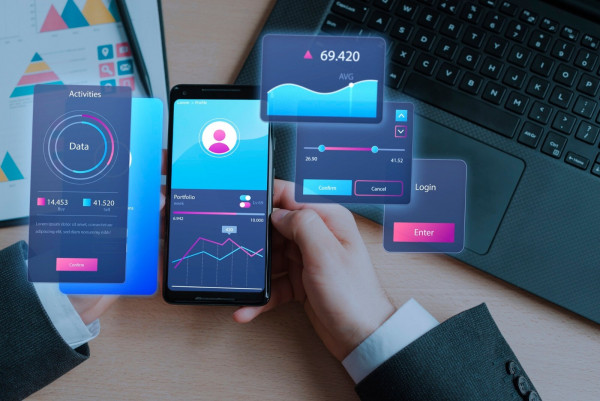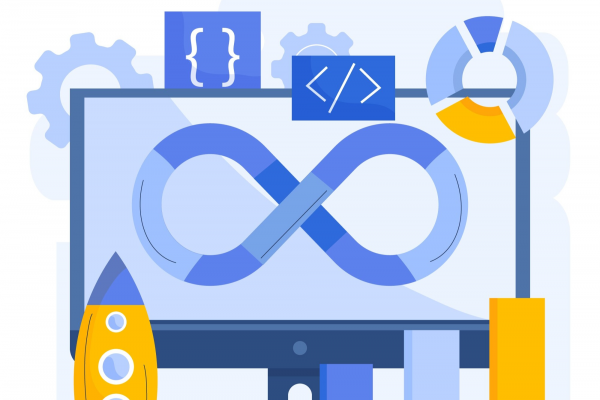Introduction:
As technology acumen grows among consumers, the demand for faster, more efficient, and intuitively designed products has reached unprecedented levels. The rapid pace of product innovation has become a pivotal factor, with companies that fail to keep pace risking obsolescence in the competitive landscape. Staying ahead is not just a strategy; it is imperative for maintaining relevance in today’s dynamic market.
In response to this imperative, digital product engineering services have emerged as the optimal solution for developing products that dynamically evolve and deliver sustained business value. These services serve as the linchpin for unlocking innovation and ensuring customer delight.
The global product engineering services market, currently valued at $1,200 billion in 2023, is poised for substantial growth, projected to reach $2,400 billion by 2033. This growth trajectory, with a CAGR of 7.2% during 2023-33, underscores the increasing importance and adoption of digital product engineering services in the evolving landscape of product development.
1. The Metaverse’s Impact on Product Development
Visualize a product development metaverse as an interconnected continuum of models, replicating facets of a product’s real-life behavior in diverse environments, communication protocols, operating conditions, or usage loads. These models serve as precise references, replicating either a singular interaction or a set of interactions. When integrated with intelligent feedback loops, the connection or cascading of multiple emulation systems can generate a digital twin, mimicking a single interaction or an entire ecosystem.
2. Product Development in the Fast Lane of the Metaverse
- Turbocharging Product Development
By incorporating robust emulation engines, digital twins significantly expedite product development, reducing costs as the performance envelope can be anticipated before manufacturing. Whether for a device, application, network, or large volumes of all three, developers can swiftly explore possibilities, troubleshoot potential issues, and optimize efficiencies at scale. This heralds a transformative era of agile development.
- Accelerating Iterative Innovation
Post-construction, developers leverage the digital twin to enhance the design’s quality and speed, evaluating new features. Designed with an extended reach in mind, a product development metaverse can expand as new features necessitate extending emulation features. This continuous evolution accelerates global applicability across various environments, ensuring the cost-effective and timely delivery of innovative products.
- Collaboration
In the backdrop of global innovation competition, a shared virtual development environment facilitates teams in engaging their best talent from any location. Crucial for designs meeting multiple interface and operation standards, this decentralized expertise dramatically speeds up troubleshooting and innovation breakthroughs. Emulation-powered digital twins create common tools accessible to every team, enabling real-time refinement and improvement of products in the metaverse, enhancing the productivity of remote work.
3. Decentralized Applications Driving Blockchain Innovation:
- Blockchain’s Impact on Security and Trust: One of the paramount contributions of blockchain to software development lies in elevating security and trust. Traditional centralized systems are susceptible to single points of failure, a vulnerability mitigated by the inherent decentralization of blockchain. The immutable ledger ensures data recorded cannot be altered without consensus, fostering trust among users and developers.
- Smart Contracts Transforming Processes: The advent of smart contracts, self-executing agreements with terms directly coded, opens new frontiers in software development. These programmable contracts automate processes, diminishing reliance on intermediaries and ensuring precise execution of agreements. In sectors like supply chain management, blockchain offers transparency and traceability in software projects.
- Blockchain’s Impact on Project Management: Blockchain introduces a paradigm shift in project management and collaboration. Its transparent nature enhances project management efficiency, providing all stakeholders access to a single, unalterable version of project data. This transparency aids collaborative coding and version control, ensuring authenticated tracking of changes. Blockchain also plays a vital role in safeguarding intellectual property and managing software licenses, offering a secure and transparent approach.
- Synergy of Blockchain with Agile Methodology: Integrating blockchain with agile methodology presents a compelling synergy. Agile practices, emphasizing flexibility and iterative development, find support in blockchain’s provision of secure, transparent, and immutable records of project progress. This integration enhances continuous integration and deployment processes, providing a robust framework for agile project tracking.
4. Energy Harvesting:
Engineers must prioritize the trend of energy harvesting, focusing on sustainability and energy efficiency. The ability to capture ambient energy like solar, kinetic, and thermal power is crucial. Staying updated on energy harvesting advancements is essential for seamless integration into various product applications, from IoT devices to smart infrastructure. This not only reduces reliance on traditional power but also contributes to eco-friendly and self-sustaining systems, aligning with global sustainability goals. Engineers, by monitoring energy harvesting trends, play a key role in driving positive change in technology’s power landscape.
5. Cybersecurity remains a top concern for engineers:
As digital systems integrate at an increasing rate; the evolving threat landscape demands engineers stay updated on the latest cybersecurity measures. The surge in device connectivity, IoT prevalence, and sophisticated cyber threats emphasizes the crucial need for robust cybersecurity practices. Engineers must engage in continuous learning, adopt advanced encryption technologies, and implement resilient protocols to fortify systems against potential cyber-attacks. In the evolving tech landscape, cybersecurity stands as a perpetual and paramount concern for innovation-focused engineers.
6. Low code/No-code platform for non-tech users:
Low-code/no-code platforms break down barriers between coders and non-coders, enabling diverse professionals like business analysts, marketers, healthcare professionals, and educators to contribute to technology creation. This democratization of software development fosters innovation and problem-solving throughout organizations. Additionally, these platforms accelerate digital transformation by allowing businesses, even traditional retailers, to swiftly develop and deploy digital solutions without an extensive IT team. They support agile prototyping for startups, facilitating rapid iteration based on real-world feedback, and simplify integration for large enterprises dealing with legacy systems, ensuring efficient modernization.
7. Quantum computing transforms problem-solving:
With its remarkable capacity to process vast amounts of information rapidly and transmit multidimensional data, quantum computing holds significant potential for advancing technology. Its impact will be felt across various sectors, including manufacturing, artificial intelligence, and cybersecurity. In the financial realm, quantum computing can enhance trade simulations, accelerate financial modeling, and improve marketplace predictions, thereby increasing security and fraud detection capabilities. Similarly, the pharmaceutical industry is embracing quantum computers for simulating molecular interactions, facilitating rapid drug development, and potentially enabling gene-specific cures through intensive DNA studies.
8. Platform engineering become a crucial force:
Platform engineers streamline software delivery by facilitating easier access for application developers. This involves standardizing Kubernetes deployments, ensuring auditable infrastructure, automating deployment processes, and providing documentation. Amid the recent economic downturn, the emphasis on making developers more productive led to a renewed focus on platform engineering. Contrary to assertions of DevOps demise, platform engineering has evolved independently, offering complementary disciplines to enhance overall efficiency.
9. Extended reality enhancing user experience:
The future of design is poised for a revolution driven by Extended Reality (XR), encompassing virtual reality, augmented reality, and mixed reality environments. XR offers designers the ability to immerse themselves fully in a digital environment (virtual reality), enhance the real world with digital elements (augmented reality), or seamlessly blend the real and virtual realms (mixed reality). Trained designers utilizing XR tools can significantly enhance product design processes, reduce costs, and expedite new product development, marking a transformative leap in design possibilities.
10. Progressive web applications gain traction:
Progressive Web Apps (PWAs) revolutionize web development by seamlessly combining the best features of web and mobile applications. Bridging the gap between traditional websites and native mobile apps, PWAs provide a fast, reliable, and engaging user experience without requiring installation. Notably, PWAs excel in offline functionality and adaptability to diverse devices, fostering increased user engagement. Developers will benefit immensely due to these:
- Cost-Effective Development: PWAs use web technologies, reducing development costs and time.
- Faster Deployment: Instant deployment via URL without app store approvals.
- Cross-Platform Compatibility: Works on various platforms, reaching a broader audience.
- Lower Maintenance Effort: Automatic updates through service workers reduce ongoing maintenance.
- Improved User Engagement: App-like experience, push notifications, and offline capabilities enhance user satisfaction.
- Better Discoverability: Discoverable through search engines, increasing accessibility.
11. Sustainable product/software development
- Software Optimization: Efficient code minimizes energy consumption, emphasizing user experience and performance. Overengineering is avoided to prevent software bloat.
- Deployment: Optimal resource usage is crucial in software deployment, reducing inefficiencies associated with constant idling, contrasting private servers, and energy-efficient cloud-native applications.
- Integrations: Sustainable software minimizes data processing between system components and third-party systems.
- Refactoring: Sustainable solutions prioritize maintenance and refactoring to remove obsolete functionalities.
- Software Architecture: Sustainable developers leverage architectures for enhanced efficiency, deploying serverless functions to reduce overall energy consumption.
- Data Centre Choices: The choice of data centers impacts software sustainability, with varying levels of commitment to carbon neutrality and green energy sourcing among cloud providers.
Conclusion:
Unleash your business potential with STL Digital’s outstanding Product Engineering prowess! As a premier IT service provider, we excel in delivering tailored, innovative solutions. From agile development to the latest technologies, we ensure your products reach the market faster and lead the market. Elevate your business with STL Digital’s reliable, efficient, and cutting-edge expertise. Let’s shape success together!



